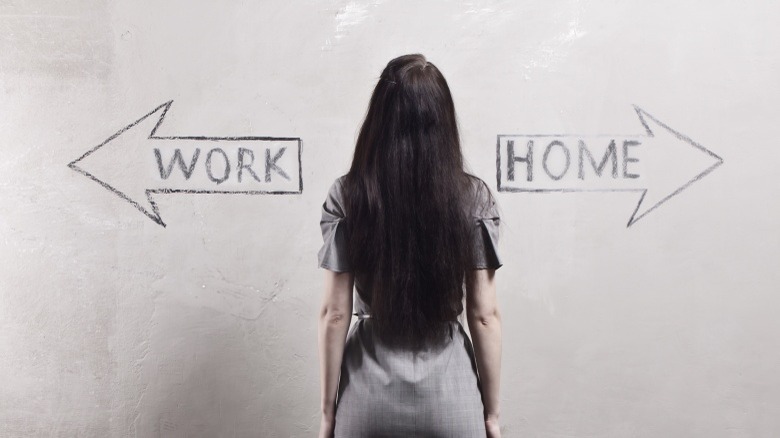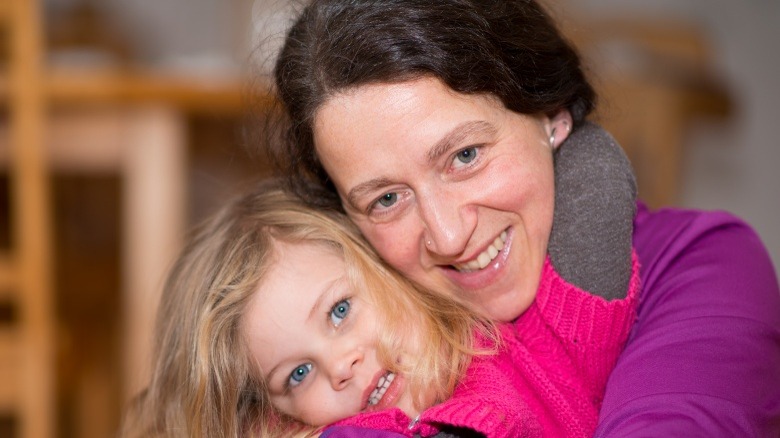Is Your Biological Clock Running Out Of Time?
We may receive a commission on purchases made from links.
We are constantly hearing about this mythical "biological clock" marking each minute that a woman is without a child. Running in tandem with the biological clock is the career clock, or the world travel clock, or any dream clock that might be thwarted by marriage, children, or other responsibilities.
More and more women are choosing to ignore their biological clocks. According to the National Center for Health Statistics, the average age of a first-time mother was 26.3 in 2014, compared to 21.4 in 1970. But what happens if you wait too long?
Losing time
First things first, it's important to actually define the biological clock. It's widely believed that women have this clock that clangs loudly, reminding women to fill their barren womb. But that can't be any further from the truth.
Women and men have several biological clocks. These clocks are actually groupings of molecules in cells throughout our bodies. They follow a circadian rhythm, which regulates when we eat, sleep, and do all other things.
Inside our brain is the master clock, which controls all the other clocks — the sleeping clock, the eating clock, the menstrual clock. These clocks do not lose time unless we manipulate them into going off schedule by binge watching TV, having Cheetos for every meal, or working a swing shift.
Work of fiction
The origin of the fertility biological clock myth is a 1978 Washington Post article — so this is a relatively new concept that is used to torture young, enterprising women. The article, which used a fictionalized woman, describes an internal clock chiming to remind all women, between the ages of 27 and 35, of the decision they must make before there is no time left. The article, however, fails to acknowledge that not all women feel a decision must be made, men are also beholden to this "clock," and the clock doesn't stop working on your 35th birthday.
Cautionary tales
Despite the questionable reporting, the concept of a time clock — more like time bomb — persists. It has been used to shame women into having children in the United States and abroad. To boost fertility among women of the ages 21 to 30, the Singapore government created an advertising campaign using fairy tale characters to further the biological clock myth. The 2002 book Creating a Life: What Every Woman Needs to Know About Having a Baby and a Career also promulgated the myth through misleading statistics. In the book, author and economist Sylvia Hewlett stated that only 14 percent of the women she interviewed chose not to have children. However, a closer look at her survey found that 14 percent represented how many women knew while in college that they didn't want children later in life.
Dirty 30s
While the biological clock we grew up fearing doesn't exist or actually run out of time, our bodies do go through changes that make getting pregnant harder as we get older. The ability to get pregnant begins to decrease at about age 32. It speeds up around age 37 and continues through to age 45. The chance of miscarriage increases — about 10 percent of women will miscarry at age 20, while at least 90 percent will miscarry at age 45 or older, according to a study published in the New England Journal of Medicine. This decline in fertility and increase in miscarriage is attributed to poor egg quality and quantity.
Stress and anxiety
According to some studies, stress and anxiety might impact your chances of getting pregnant more than your age. A 2014 study found that women with high stress indicator levels in their saliva were 29 percent less likely to get pregnant than women with lower levels. This supported a 2010 fertility study that showed women with high levels of stress-related enzymes that were trying to get pregnant were 12 percent less likely to conceive than women with low stress markers.
New day, same rates
Though many women are choosing to hold off on conception, data from the Centers for Disease Control and Prevention (CDC) shows that the number of couples seeking infertility treatment in the United States was mostly unchanged between 2002 and 2013. The National Survey on Family Growth also found the percentage of infertile women, aged 15 to 44, dropped from 8.5 percent in 1982 to 6 percent in 2006-2010.
Older mommy
Getting pregnant at 50 or older is a growing trend. According to the AARP, an average of 13 children were born to mothers 50 and older every week in 2013. These pregnancies and births are usually assisted by in vitro fertilization — a process of fertilizing eggs outside of the body. The number of women 50 or older who gave birth went up by more than 165 percent from 2000 to 2013, according to the CDC.
Health risks
While women can have babies into their 50s, there are health risks associated with later life pregnancies, even for women in their 30s and 40s. Women with chronic conditions like high blood pressure and high blood pressure run the risk of miscarriage or congenital disabilities. Older moms are also more likely to develop these conditions during their pregnancy. Waiting to have babies may increase the risk of premature birth, increase the odds of chromosomal abnormalities, and increase the need for a cesarean section, according to the Mayo Clinic.
Benefits of waiting
Despite all of this, there are many benefits to waiting to have children. A recently released study shows that women who wait to have babies have increased cognitive function and better health later in life. Some studies show that children with older parents do better in school than children with younger parents. And despite advanced age, studies also show older parents can keep up with their little ones as well as younger parents.









